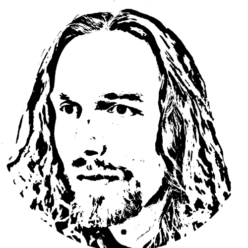There are three types of happiness – the happiness that comes from receiving and having things, the happiness that comes from giving and doing, and the happiness that comes from being, presence and connection. When we rely on the first as our main source of happiness we become needy and addictive. When we rely on the second we become energetic, caring, but stressed. When we rely on the third as the main foundation of our happiness then life can be a joy. It can also include the other ones as the presence and connection can lead us to meaningful action and to filling our life with good, satisfying things.
These three types of happiness also relate to the three kinds of connection – connection to self, to other, and to the infinite. A balanced fulfilled life depends on combining all three of these connections so that we are in harmony with ourselves, others and the universe. Spiritual traditions and different attitudes to life can be compared by looking at which of those connections they encourage. for example most conservative religious traditions are very focused on the infinite divine connection, but often at the detriment of connection to self – some of them promote connection to others, and some less so. The Atheist, materialistic attitude leads to a disconnection from the infinite, but in many cases goes along with a humanist concept that leads to connection to others and sometimes also to oneself. Ecstatic spiritual experiences of love are often based on deep connection to yourself and the divine, but not the other. Etc.
There are 7 layers of the mind that correspond to the 7 combinations of the three connections
- instinctive – connected only to self
- Religious – connected only to the infinite
- Rational – connected only to the other
- Creative – connected to self and the other
- Compassionate – connected to the infinite and the other
- Ecstatic – connected to self and the infinite
- Harmonious – connected to self, other and the infinite.
We are each free to choose which of these approaches to life we wish to choose and there are benefits to each one of them, however this website and my teachings are specifically focused on the triple connection and the harmonious approach to life. There are important reasons why I recommend this approach, but there are also particular challenges associated with it.
The harmonious approach is slow but complete transformation. It has the potential to resolve all our problems – happiness as well as relationships, as well as environment and politics and community etc. It takes us out of the realm of conflict and problems altogether to the realm where all challenges are opportunities for growth and more joy. But it takes some patience, and a lot of ongoing personal growth, a commitment to opening to the divine light and love and connection in all things. We cannot bring with us and hold onto our resentments and our fears, but must dive completely into love, peace and joy. If this is for you then read on. If not perhaps you can try another teacher who is focused on a different approach to life and a different level of the mind.
There are 2 main ways to approach spiritual growth through the levels of the mind – what people call awakening that leads to profound transformative joy. The one is self study – which depends on the power of awareness to transform yourself and deepen yourself in every way and at every stage. The second is Tantra – which is techniques that a master can teach you that will transform you – specific exercises or prayers or mantras that have a specific effect. This method is faster, but it requires a master that you trust to show you how it is done. I would recommend a combination of the two – finding your own way, but with some techniques to speed the process. This is what I try to offer here. One place you could start is my \”open to love\” course.
